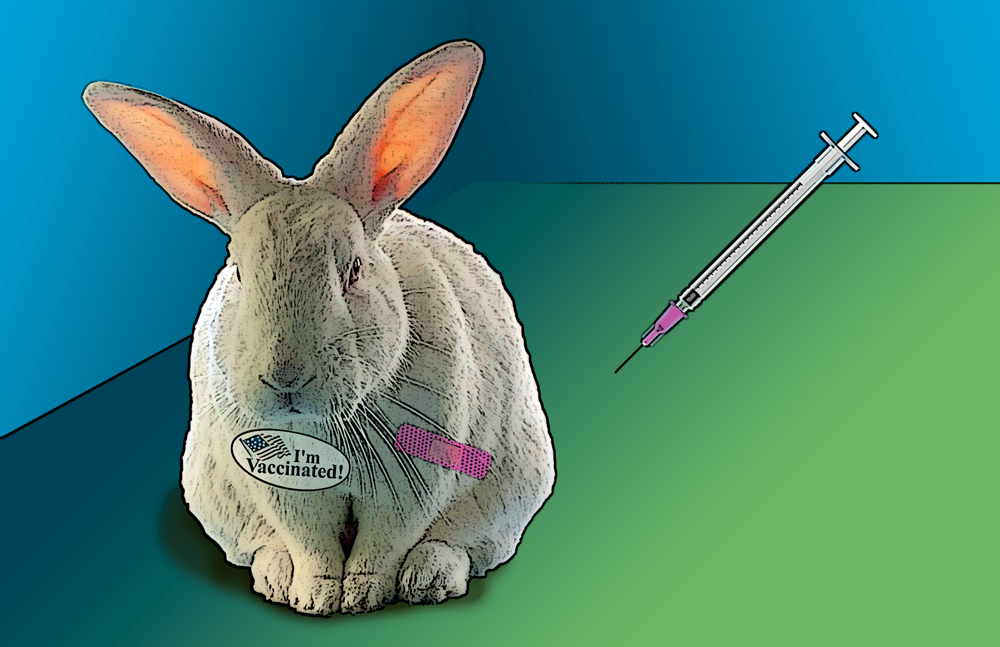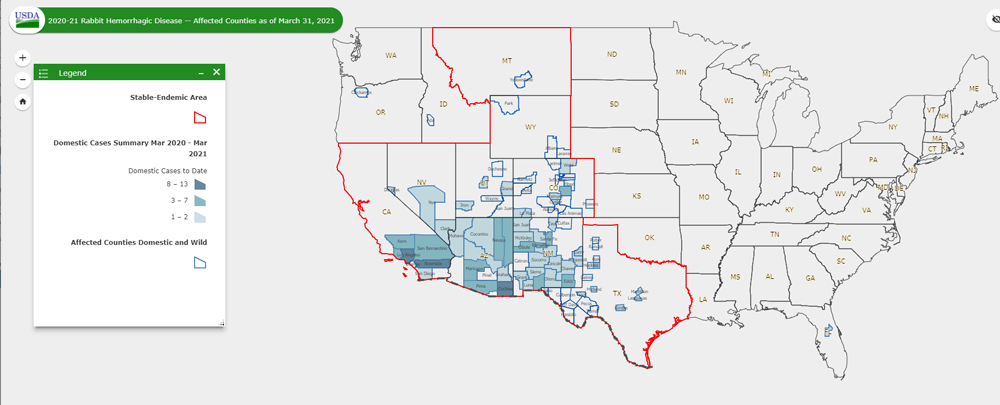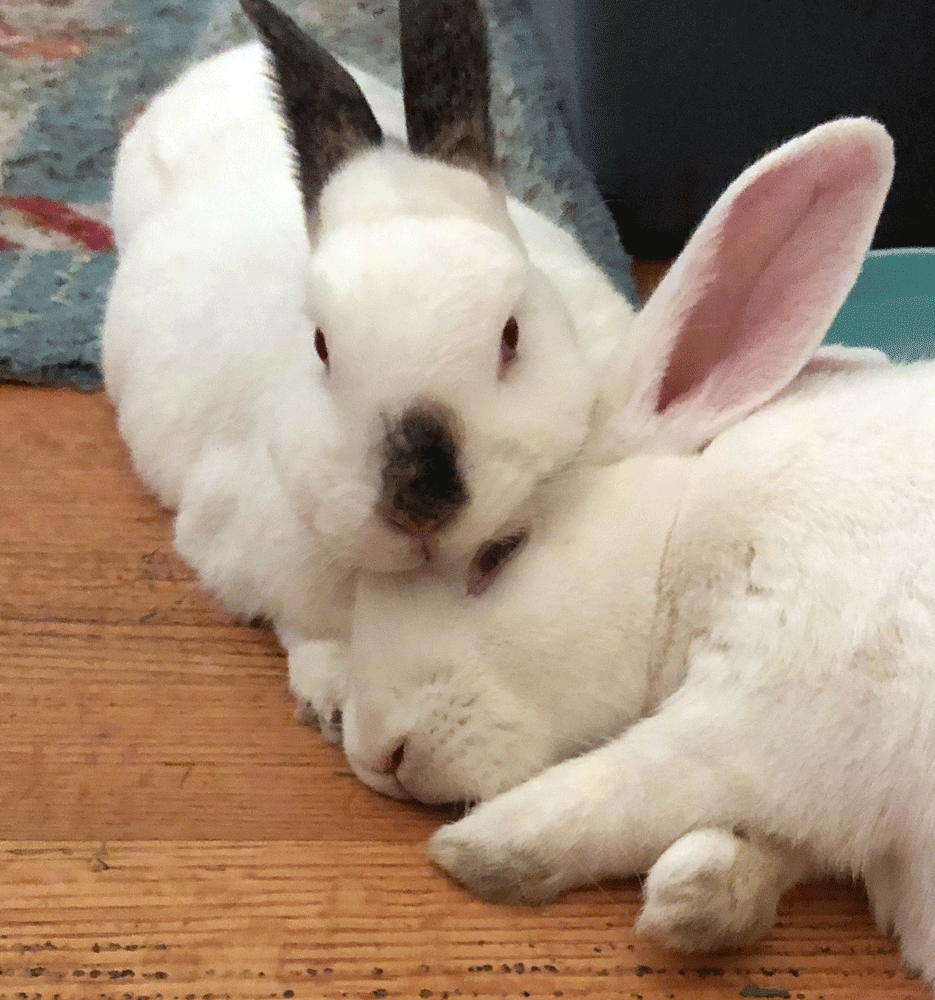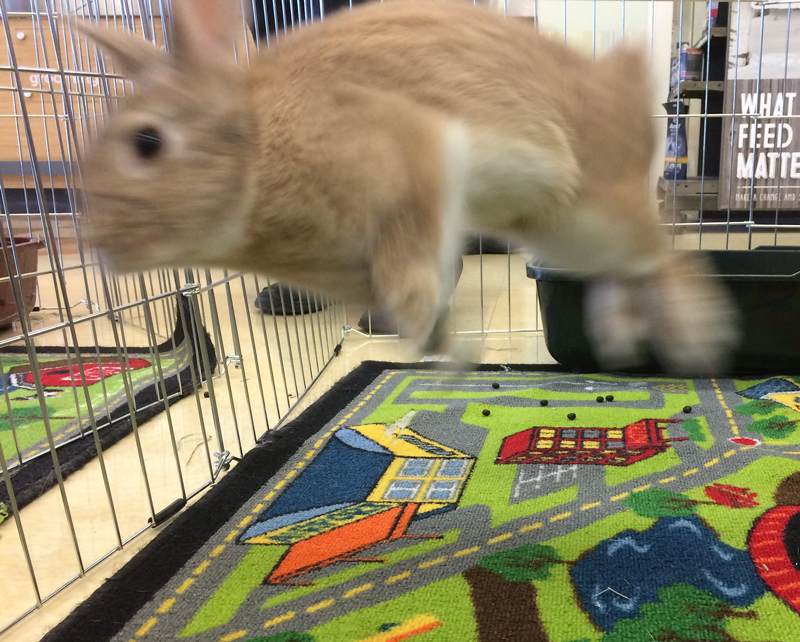
As rabbit guardians, we faced the threat of more than one pandemic in 2020. While protecting ourselves from COVID 19, we grappled with keeping our furry charges safe from an even deadlier virus called Rabbit Hemorrhagic Disease 2 (RHD2). But recently there’s some exciting news: There may soon be a new way to prevent RHD2.
What’s RHD2?
RHD2 is extremely dangerous to rabbits and related species with a 50 to 100% fatality rate. Similar to COVID 19, those infected can live without visible symptoms for 2 to 9 days. Any type of fluid from a sick bun will spread the disease either via direct contact or encounters with traces left on surfaces. It can also be spread by insects and even the wind. As a result, it circulates rapidly and cruelly, killing vast numbers of bunnies.
The “2” in the name refers to it being the second widespread strain. The first RHD virus only affected domesticated buns and their ancestor breed, European rabbits. Because native North American rabbit breeds are not susceptible, it was harder for that illness to spread here so it never took hold this side of the Atlantic. Until the advent of RHD2, bun folks in the U.S. were blissfully unaware that animals overseas were suffering.
But RHD2 isn’t so fussy about species: our ubiquitous cottontails, hares, and jackrabbits can all get it. Even bunny-cousins, pikas, can suffer its wrath. So our continent has now joined the ranks of the RHD-infested.
This is bad news for the environment. Wild rabbits and hares, which are an important part of the food chain for lots of larger carnivorous animals, are going to be hard hit. It’s also quite possible that some species will go extinct due to the virulence of this awful plague.
In the U.S., RHD2 was first confirmed in domesticated rabbits in Medina County, Ohio in September, 2018. For now it’s most prevalent in the Southwestern states. However, given the ease with which it spreads, it’s likely to reach every corner of North America over time. (It’s already been seen in both Canada and Mexico as well.) The latest USDA data on the spread of the disease is available online through this interactive map.

Although RHD2 hasn’t yet been confirmed in or near my county, it’s in my state. I live in a densely populated city where I never see a wild rabbit, but my favorite weekend activity is hiking in nearby parks and open spaces. If there’s an outbreak among the wild rabbits living out there, I could easily bring the disease home on my shoes and infect my precious furballs!
Protecting Your Buns
There is no cure for RHD2, and due to lack of symptoms until just prior to death, there is little that can even be done to treat it. If you live in or near an infected area, it’s important that you take precautions to keep this stealthy killer out of your home. The House Rabbit Society has a great fact sheet with precautions everyone should take to protect their long-eared loves. Due to the COVID lockdown, it was easy for my husband and me to stay away from other pet rabbits while ours were still vulnerable. We also avoided outdoor activity in areas where infected animals could live.
Fortunately, vaccines have been developed in Europe that can prevent bunnies from getting sick with RHD2. Two of them, Filavac and Eravac, have been shown to be effective.
Unfortunately, the path to preventive treatment in the U.S. isn’t as simple as getting a COVID 19 shot. Those two vaccines aren’t licensed for use here. Why not? According to this fact sheet, the U.S. government would love to license them, but the companies that manufacture them have to initiate the process. Seems like a missed opportunity to me. (I’m looking at you, Filavie and Hipra.)
But the world isn’t so cruel as to deny vaccination to your bunny if you live in a state with infections (again, check the latest map to see which states have RHD2 ). Both Filavac and Eravac are approved for use in those states through special permits. But this means it’s a lot more complicated for your vet to get the stuff. You’ll have to find a dedicated rabbit doc who will go through the hassle to make this lifesaving treatment available.

Moraea and Finnegan were fortunate to have just such a person as their vet. They were both vaccinated last summer after we heard about the RHD2 pandemic. We fretted slightly over the possibility of side effects, but neither bun seemed the least bit fazed by it. It takes a few weeks post-shot for your bun to develop antibodies, so we kept our woods-trekking moratorium in place for a while before finally breathing a big sigh of relief. We still avoid wearing our hiking shoes around the buns, but they have a very good chance now of being unaffected by this disease.
The protection only lasts a year though. In the intervening time, our favorite bunny vet has retired! So we’ll have to find a new doc of her caliber to help us out with booster shots soon.
And Now For the Really Exciting News
As with the coronavirus pandemic, additional vaccines are just around the corner. And this time one is being produced by a U.S.-based company called Medgene Labs. According to the company’s CEO, Mark Leucke:
“We are in the process of generating the required safety and efficacy data for USDA approval. We have a reasonable expectation of both safety and efficacy based on our success with similar vaccines in multiple animal species across multiple disease targets, including multiple serotypes of EHD (epizootic hemorrhagic disease) in deer.”

And if that’s not enough good news, there are two more great things about this ounce of prevention:
- It uses the same technology that has been proven effective in the Pfizer and Moderna COVID 19 vaccines to create immune responses.
- Unlike its forbears, which must be made from the blood of infected animals, no bunnies are needed to produce it.
I felt kind of bad that a rabbit had to die to protect Moraea and Finnegan. It was a tough choice to get that vaccine. However, as with the COVID vaccine, every individual who gets vaccinated potentially saves countless additional lives by robbing the virus of a host/spreader. Choosing to vaccinate can prevent unnecessary sickness and death not just in the recipient rabbit, but other bunnies as well.
Still, I’m hoping the Medgene product will be available in time for us to use it this year so we don’t have to make that choice again.
The Fluffy Tail of This Blog Post
RHD2 is a vicious, killer disease that will undoubtedly be in North America to stay, just as it has been in Europe for some time. So if you’re a bun parent, keep close track of its spread, take precautions to prevent bringing it home, and please consider getting your precious puff-tail vaccinated if you can.
Bandage in cover image by Clker-Free-Vector-Images from Pixabay
Syringe in cover image by OpenClipart-Vectors from Pixabay
Syl says:
Really interesting!!